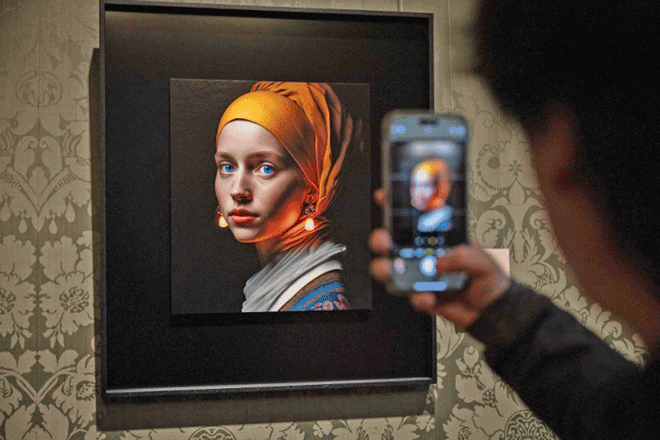You are here
Hals’ ‘Laughing Cavalier’ takes centre stage at new exhibit
By AFP - Feb 15,2024 - Last updated at Feb 15,2024
AMSTERDAM — Four centuries after he was created with a roguish grin, fabulous upturned moustache and stylish outfit, Dutch master painter Frans Hals’ most celebrated portrait returns to The Netherlands in a new exhibition.
Borrowed from Britain’s Wallace Collection, Hals’ 1624 masterpiece “The Laughing Cavalier” will go on display on Friday with more than 50 other paintings in a never-before seen collection at the Rijksmuseum.
“We felt that Frans Hals is one of the greatest painters of the 17th century and after Rembrandt and Vermeer we should now give him centre stage,” Rijksmuseum Director Taco Dibbits said.
But whereas Rembrandt painted the human condition and Vermeer was known for his intimate portraits, Hals “is all about movement”, Dibbits said.
“The Laughing Cavalier” — the portrait of a 26-year-old actually believed to be a wealthy civilian — makes an appearance for the first time in more than 150 years on Dutch soil, Amsterdam’s famous museum said.
Taking a main place in the exhibit, the mischievous gentleman sports some of Hals’ technical hallmarks: broad quick brushstrokes capturing him in a fleeting moment, but also a keen eye for detail such as the intricate embroidery on his left sleeve.
The “Laughing Cavalier” is in good company: several other rare Hals masterpieces will be on display including one on loan for the first time ever from the Frans Hals Museum in nearby Haarlem, where the artist lived and worked.
Painted in 1616, “The Banquet of the Officers of the St George Civic Guard” has never previously been loaned out, while several other works like the 1630 painting “Fisher Boy” comes from a private collection and the 1625 “Laughing Boy” from the Mauritshuis Museum in The Hague.
The vast majority of Hals’ some 220 paintings were portraits — and not just of rich merchants or married couples.
Hals’ own son Pieter had a mental disability and it must have had a huge impact on the painter, Dibbits said.
One painting, the 1640 “Malle Babbe” depicts a laughing older woman holding a beer pewter with an owl on her shoulder — a sign that she was mentally impaired.
Another, called the “Rommel-Pot Player” painted in 1620, shows a man believed to have a mental disability playing a home-made instrument surrounded by laughing children.
But many of Hals’ paintings have people laughing, captured in a moment almost like a photograph.
Seen as the front-runner to inspire the late 19th century Impressionists, Hals was known for his sweeping strokes and vigorous dabs of paint.
“Frans Hals is an explosion of movement, the opposite of Vermeer,” said Dibbits.
“He shows movement through the speed of his paintbrush. Really, the paintbrush dances over the canvas,” Dibbits said.
Related Articles
THE HAGUE — Dutch master Johannes Vermeer’s photo-like paintings were likely inspired by a 17th-century pinhole camera that was first introd
THE HAGUE — At first glance it seems to be just a modern take on Johannes Vermeer’s masterpiece “Girl with a Pearl Earring”.
Richard Johnson can see right through the masterpieces of Rembrandt and Van Gogh.















